Ceramic coating has become increasingly popular among car enthusiasts because it provides long-lasting protection and a glossy finish. However, proper maintenance is crucial to ensure the longevity and effectiveness of the ceramic coating. This blog post will discuss 5 Maintenance Tips for Cars with Ceramic Coating to keep your car looking its best.
So you’ve invested in ceramic coating for your car and want to ensure it stays pristine. While ceramic coating offers excellent protection against UV rays, dirt, and scratches, it still requires regular maintenance to maintain its effectiveness.
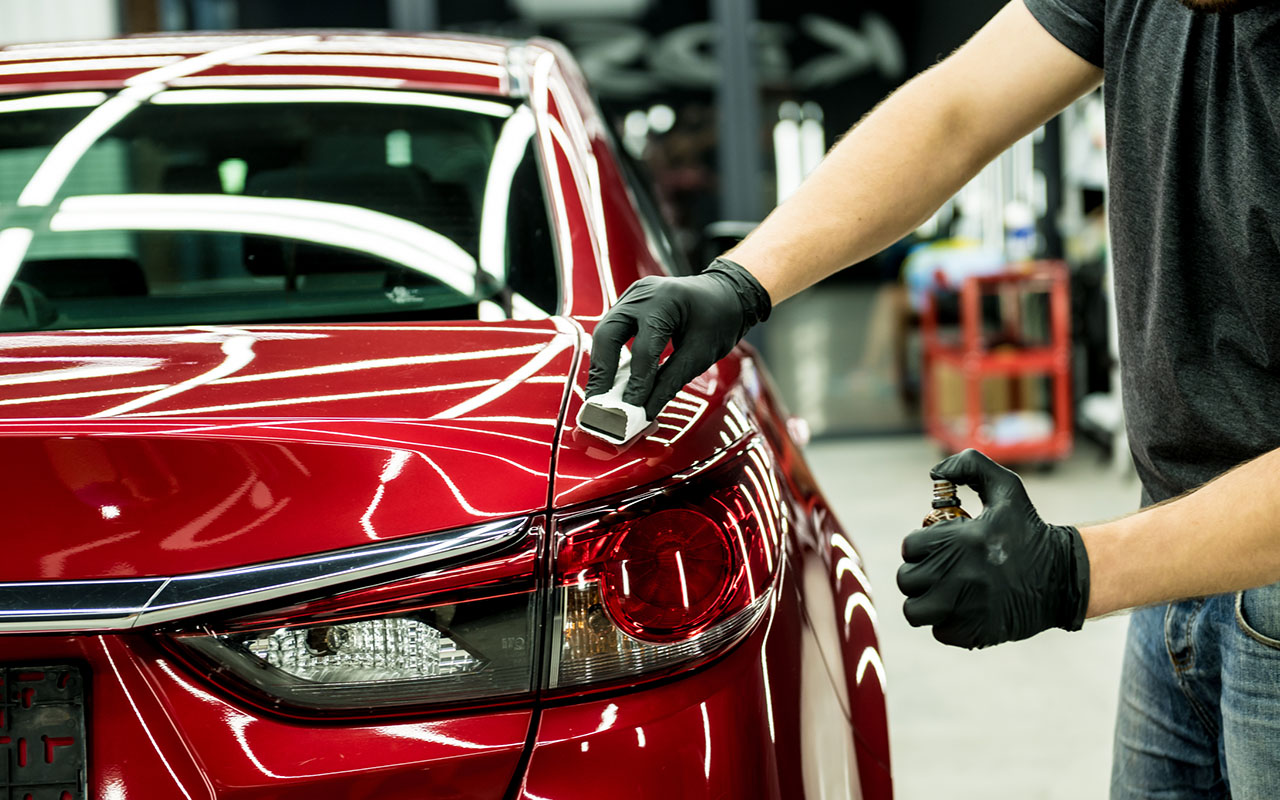
Following these 5 maintenance tips ensures that your car’s ceramic coating stays intact and provides long-lasting protection for years.
Table of Contents
What is Ceramic Coating for Cars?
Ceramic coating for cars is a protective layer applied to a vehicle’s exterior to enhance its appearance and provide long-lasting protection against environmental elements. It is made of nanotechnology-based materials that bond with the paintwork, forming a durable and hydrophobic barrier that repels dirt, water, UV rays, and other contaminants.
5 Ceramic Coating Maintenance Tips
- Proper Washing Techniques
- Clay Bar Treatment
- Paint Protection Films (PPF)
- Proper Drying Techniques
- Ceramic Boost Sprays
1. Proper Washing Techniques for Ceramic Coated Cars
Proper washing techniques for ceramic-coated vehicles are essential for routine maintenance to ensure the longevity and effectiveness of the ceramic coating. Using gentle, pH-neutral car wash soap microfiber towels, and avoiding harsh chemicals and abrasive tools will help protect the ceramic coated vehicle and maintain its glossy finish.
Two-Bucket Method
1. Two-Bucket Method: The two-bucket method prevents swirl marks and scratches on ceramic coated vehicles. Fill one bucket with clean water and another with a mixture of water and a high-quality car shampoo.
Start by rinsing the car with water to remove loose dirt and debris. Then, dip a wash mitt into the soapy water bucket, ensuring it is fully saturated.
Gently wash one section of the car at a time, starting from the top and working your way down. After each section, rinse the wash mitt in the clean water bucket to remove any dirt or contaminants before dipping it back into the soapy water. This method helps prevent dirt from returning to the car’s paint surface.
Using the Right Car Shampoo
2. Using the Right Car Shampoo: Using a pH-neutral and non-abrasive car shampoo specifically designed for ceramic coated cars is crucial. Avoid harsh car shampoos or household detergents as they can strip away the protective coating and cause damage. Look for an automotive maintenance shampoo that is gentle on the coated surface yet effective in removing dirt and grime.
Grit Guard Inserts
3. Grit Guard Inserts: Grit guard inserts are plastic grates that sit at the bottom of each bucket to trap dirt and grit. They help prevent contaminants from being reintroduced onto the wash mitt, reducing the risk of scratches and swirl marks on the ceramic car coating.
The inserts allow dirt to settle at the bottom of the bucket, keeping the wash mitt clean and safe to use on the car’s surface.
Clean Microfiber Towels for Drying
4. Clean Microfiber Towels: After washing the car, use a soft microfiber towel to dry the surface. Avoid using regular towels or chamois, which can leave lint or scratches behind. Microfiber towels are gentle on the ceramic coating and absorb water efficiently, preventing water spots. Gently pat the surface dry, ensuring there is no moisture left behind.
By following these proper washing techniques for ceramic-coated cars, you can maintain the longevity and appearance of the coating over time while avoiding water spots and damage that can occur with harsh car shampoos, automatic car washes, or drive-through car washes.
Always use the two-bucket method, the right neutral car shampoo, grit guard inserts, and clean microfiber towels to ensure a safe and effective wash for your ceramic coated car.
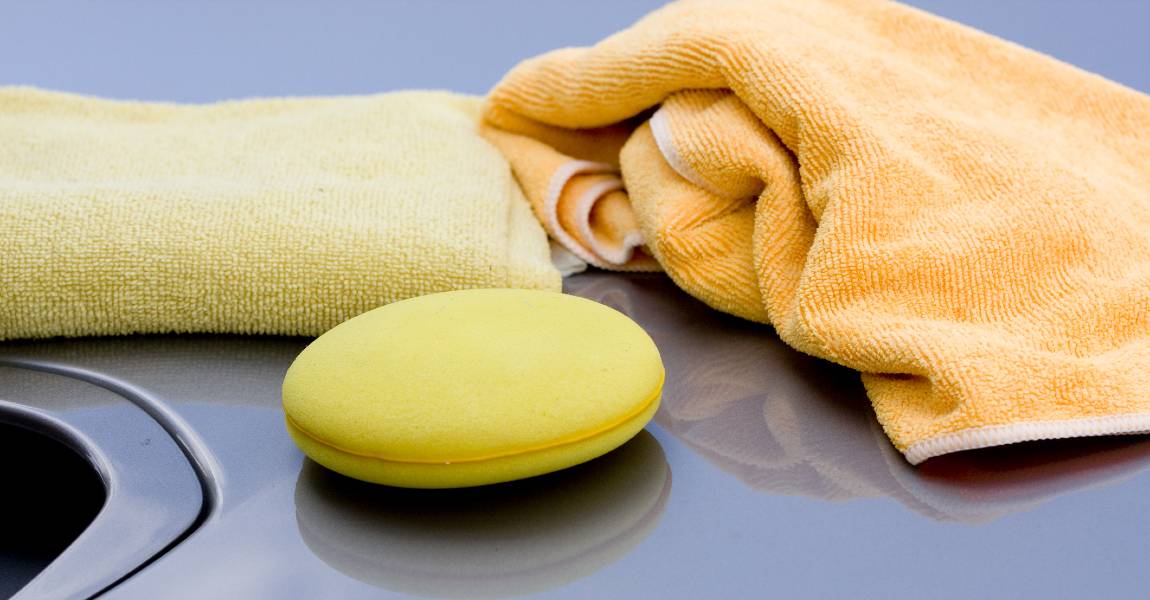
2. Clay Bar Detailing Treatment
Clay bar detailing treatment is a process used to remove contaminants from the surface of a vehicle’s paintwork. It involves using a specialized clay bar to gently lift and pull out embedded dirt, road grime, and other substances that regular washing cannot remove. This treatment is often recommended before applying a ceramic coating product to ensure a clean and smooth surface for optimal bonding and long-term protection.
How to Use a Clay Bar
To use a clay bar, thoroughly wash and dry your vehicle. Then, break off a small piece of the clay bar and knead it in your hands to soften it.
Next, spray a lubricant or detailing maintenance spray onto a small section of the vehicle’s paintwork. This lubricant will provide a slippery surface for the clay bar to glide without scratching the paint.
Gently rub the clay bar back and forth over the lubricated surface, applying light pressure. The clay bar will pick up any contaminants as it moves. Continue this process, frequently folding and kneading the clay bar to expose a clean surface until you have treated the entire vehicle.
When using a clay bar, it is essential to follow some best practices to ensure the best results:
- Work in small sections to prevent the clay bar from drying or becoming too dirty.
- Regularly inspect the clay bar for any embedded debris or particles that could scratch the paint and discard it if necessary.
- Always use a quality lubricant or detailing spray to provide a smooth surface for the clay bar to glide over.
- After clay barring your vehicle, it is recommended to wash it again to remove any residue left behind by the clay bar.
Best Practices for Clay Bar Detailing Treatment
While clay bar detailing treatment is effective for removing contaminants, certain things can be avoided during the process.
Firstly, avoid using a clay bar on a vehicle that has recently been repainted or has a rough or damaged paint surface. Clay barring can cause scratches or further damage in these cases.
Additionally, clay barring should not be performed on dry paint surfaces, as this can increase the risk of scratching.
Always ensure that the surface is lubricated correctly before using the clay bar.
After clay bar detailing treatment, applying a ceramic coating product is common to provide an additional layer of protection for the vehicle’s paintwork.
Ceramic coatings create a hydrophobic surface that repels water and contaminants, making cleaning and maintaining the vehicle easier.
These coatings also offer long-term protection against road salt, road grime, bug splatter, and other environmental elements. The water beading effect created by ceramic coatings helps to prevent water spots and further damage to the paintwork.
In conclusion, clay bar detailing treatment is an essential step in maintaining a vehicle’s paintwork.
By using a clay bar to remove embedded contaminants, you can achieve a clean and smooth surface for optimal bonding of ceramic coating products.
However, following best practices and avoiding inevitable mistakes is essential to ensure the best results.
Applying a ceramic coating after clay barring provides long-term protection and enhances the vehicle’s appearance by creating a hydrophobic surface and promoting water beading.
3. Paint Protection Films (PPF)
Paint Protection Films (PPF) are transparent, self-healing film that is applied to the exterior surfaces of vehicles to protect them from scratches, chips, and other forms of damage. PPF is typically made from a durable, thermoplastic urethane material resistant to UV rays, chemicals, and harsh weather conditions.
Paint Protection Films offer numerous benefits in terms of protecting a vehicle’s paintwork. Combined with ceramic coating, they provide an extra layer of defense against scratches, chips, and other forms of damage.
By following proper maintenance tips and caring for the PPF, car owners can ensure that their vehicles stay in optimal condition for years.
4. Proper Drying Techniques
Proper drying techniques are crucial for maintaining the longevity and effectiveness of ceramic coatings on cars.
Using the wrong drying technique, such as wiping with a rough towel or air drying, can cause micro-scratches and diminish the protective properties of the ceramic coating.
To prevent this, it is recommended to use a soft microfiber towel and a gentle blotting motion to remove water from the surface, ensuring that the ceramic coating remains intact and provides long-lasting protection for the car’s paint.
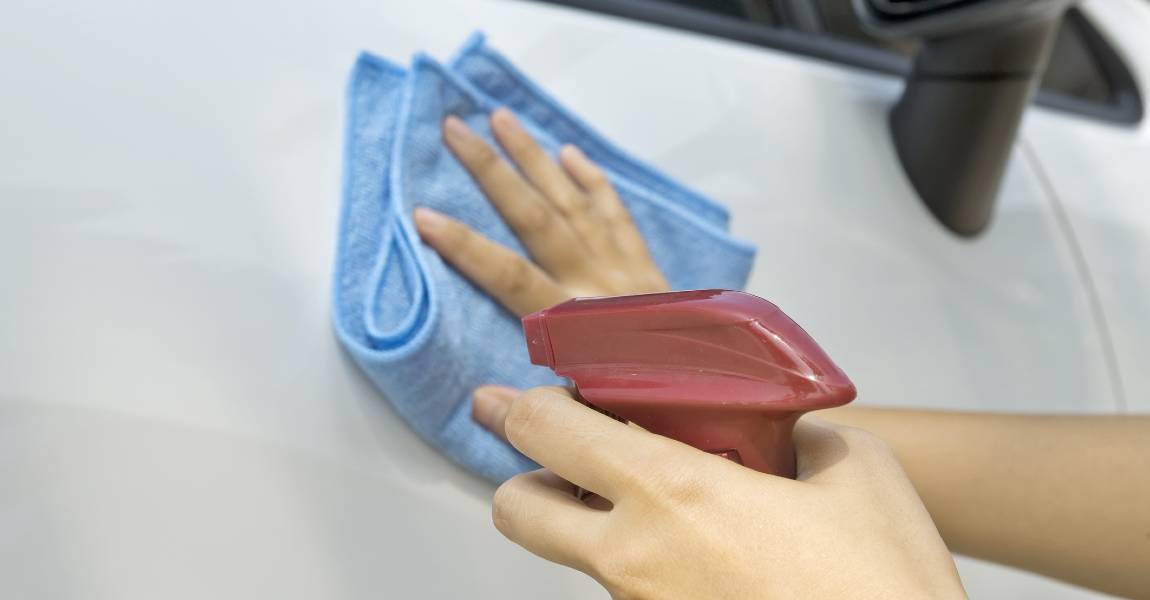
5. Ceramic Boost Sprays
Ceramic Boost Sprays are a maintenance spray specifically designed for cars with ceramic paint coatings. These sprays act as a booster for the ceramic coating, enhancing its protective properties and extending its lifespan.
1. Ceramic coating maintenance spray: This refers to a spray used to maintain and prolong the effectiveness of a ceramic coating on a car’s paint.
2. Booster spray: This term indicates a spray that boosts or enhances the performance of a ceramic coating, making it more durable and practical.
3. Ceramic coating spray: Refers to a spray formulated explicitly for ceramic coatings, providing additional protection and shine.
4. Spray coating: This term refers to the application of a protective coating using a spray method, such as a ceramic coating spray.
5. Glass coating: Glass coating is another term for ceramic coating, as it creates a transparent layer of protection on the car’s paint surface.
6. Ceramic coating application: This refers to the process of applying a ceramic coating to a car’s paint surface to provide long-lasting protection.
Ceramic Boost Sprays are easy to use and can be applied by car owners or professional detailers. These sprays usually contain a blend of SiO2 (silicon dioxide) and other protective ingredients that help to strengthen the existing ceramic coating. By spraying the Ceramic Boost Spray onto the car’s surface, it enhances the hydrophobic properties, increases gloss, and provides an extra layer of protection against environmental contaminants, UV rays, and oxidation.
Regular application of Ceramic Boost Sprays helps to maintain the longevity and effectiveness of the ceramic coating, ensuring that the car’s paint remains protected and looks its best.
Using these sprays after regular washing and drying is recommended, as they act as a quick and convenient touch-up to maintain the coating’s performance between more thorough detailing sessions.
For professional detailers, Ceramic Boost Sprays are an essential tool in their arsenal for providing comprehensive ceramic coating services. They can offer these sprays as an additional service or recommend them to their clients for regular maintenance.
Overall, Ceramic Boost Sprays are an effective and convenient solution for maintaining and enhancing the performance of ceramic paint coatings on cars. With regular use, they help to preserve the appearance and protect the paintwork, ensuring a long-lasting shine and reducing the need for frequent reapplication of the ceramic coating.
Final Thoughts on Maintenance Tips for Cars with Ceramic Coating
In conclusion, maintaining a car with ceramic coating is crucial for preserving its shine and protecting it from external elements. By following regular maintenance tips such as gentle hand washing, avoiding abrasive products, and periodic reapplication of the coating, car owners can ensure that their vehicle stays in pristine condition for years to come.
For more information on how to properly maintain your car’s ceramic coating, contact our experts today and keep your vehicle looking its best.





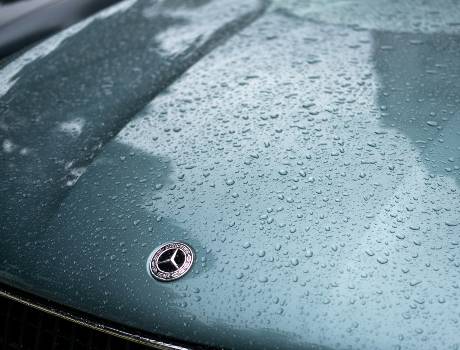
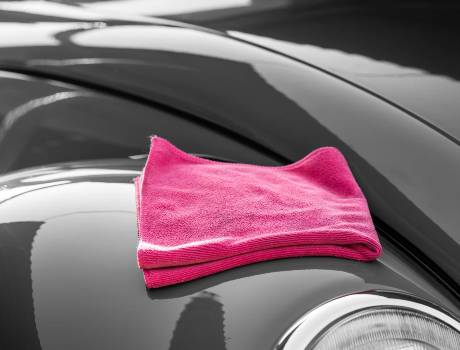

WHAT OUR CLIENTS ARE SAYING